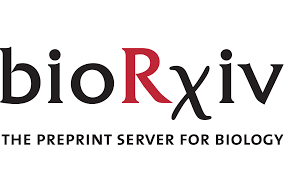Abstract:
Sandy soils are susceptible to excessive nitrogen (N) leaching under intensive crop production which is linked with the soil’s low nutrient holding capacity and high-water infiltration rate. Estimating soil mineral nitrogen (SMN) at the daily time-step is crucial in providing fertilizer recommendations balancing plant nitrogen use efficiency (NUE) and N losses to the environment. Crop models [e.g., Decision Support System for Agrotechnology Transfer (DSSAT)] can simulate SMN trend under varied fertilizer application rates and timings but struggle with accuracy in high-water table conditioned sub-irrigated soil. Alternatively, time-series deep learning (DL) models based on a long short-term memory (LSTM) are promising in understanding nonlinearity among complex variables. Yet, purely data-driven DL models for crops are challenging to develop due to limited field data availability and the excessive costs to collect more field data. Hence, a hybrid model (hybrid-LSTM) was developed by leveraging both the DSSAT and LSTM models to estimate daily SMN primarily using daily weather, applied fertilizer rates-timings, and the SMN sparse observations. This study used the observations from field trials conducted between 2011–2014 in Hastings, FL. The first step was to calibrate the DSSAT-SUBSTOR-Potato model to produce reliable SMN of the topsoil for treatments with varied N applied fertilizer rates split among the pre-planting, emergence, and tuber-initiation stages of the potato. Thereafter, the hybrid-LSTM model was trained on the calibrated DSSAT simulated SMN time-series and fine-tuned its predictions using the observed SMN to improve DSSAT simulated SMN. The hybrid-LSTM model was then tested on both calibrated and uncalibrated DSSAT SMN simulations where it outperformed the DSSAT model (improvement ranged ∼18–30 % on comparing the normalized root mean squared error) in providing reliable estimates of SMN across most of the farms and years. This novel hybrid modeling approach could guide stakeholders and farmers to build sustainable N management with improved crop NUE and yield and help in minimizing environmental losses.
Links:
Citation:
R. Gupta, S. K. Pothapragada, W. Xu, P. K. Goel, M. A. Barrera, M. S. Saldanha, J. B. Harley, K. T. Morgan, A. Zare, and L. Zotarelli, "Estimating soil mineral nitrogen from data-sparse field experiments using crop model-guided deep learning approach," Computers and Electronics in Agriculture, vol. 225, p. 109355, 2024.@article{gupta2024estimating,
title={Estimating soil mineral nitrogen from data-sparse field experiments using crop model-guided deep learning approach},
author={Gupta, Rishabh and Pothapragada, Satya K and Xu, Weihuang and Goel, Prateek Kumar and Barrera, Miguel A and Saldanha, Mira S and Harley, Joel B and Morgan, Kelly T and Zare, Alina and Zotarelli, Lincoln},
journal={Computers and Electronics in Agriculture},
volume={225},
pages={109355},
year={2024},
publisher={Elsevier}
}

